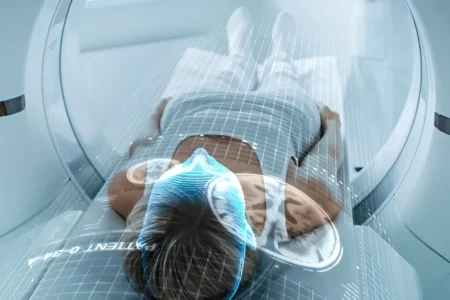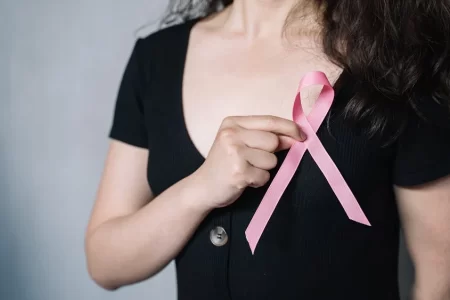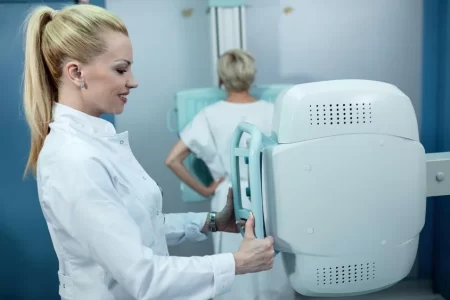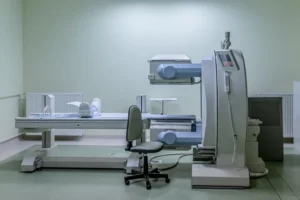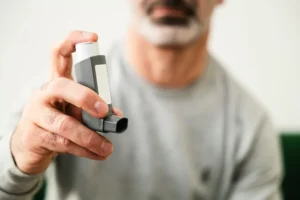Breast Self Exam (BSE)
- Updated on: Jul 29, 2024
- 4 min Read
- Published on Nov 18, 2020
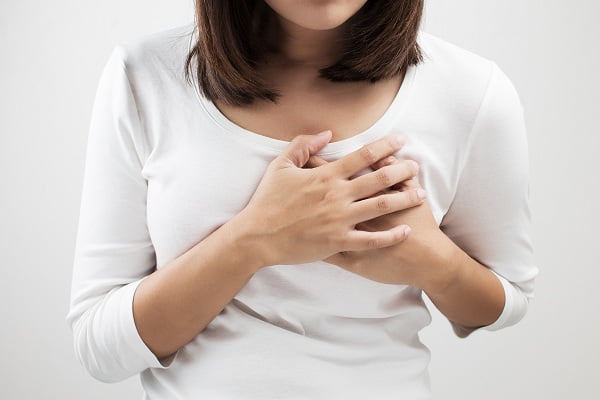
What Is a Breast Self Exam?
A breast self-exam is a screening technique that a woman can use to inspect her breasts on her own. You can perform it at home to check for breast lumps. A breast self-exam can help you screen for tumors, cysts, and other abnormalities in your breasts. Women also use a breast self-exam for breast awareness where you use your eyes and hands to look for any changes in your breasts’ look and feel.
If you notice any changes in your breast, discuss these with your doctor. Generally, most of the breast changes detected during a breast self-exam have benign causes. Some changes may signal something serious, such as breast cancer. Although the breast self-exam technique isn’t always a reliable way to detect breast cancer, a significant number of women reported that the first sign of their breast cancer was a breast lump, which they discovered on their own. For this reason, doctors recommend being familiar with the normal consistency of your breasts.
Many medical organizations recently don’t recommend routine breast self-exams as a part of breast cancer screening. Breast self-exams haven’t been shown to be effective in improving survival for women who have breast cancer or detecting cancer compared to other screening techniques. Still, doctors recommend it because they believe that there is value in women being familiar with their breasts, so they understand what’s a normal shape, size, and texture of their breasts and promptly report any changes if detected.
How Should You Prepare for a Breast Self Exam?
To prepare yourself for a breast self-exam, you may find it helpful to discuss the instructions and technique with your doctor, and you may ask your doctor for a demonstration.
The best time to perform a breast self-exam is usually a week after your period ends because that is the time when your breasts are least tender and lumpy. Hormonal changes during and just after your period can affect your breasts’ size and feel, so it is advised to perform the exam when your breasts are in their normal state.
Women who have reached menopause should self-exam their breasts in the first week of every month.
You should also maintain a journal of your breast self-exams. This will allow you to track any changes you have found in your breasts.
Read What is Breast Cancer (Female)?
How to Perform a Breast Self Exam?
You should first start with a visual examination of your breasts. To do this, you should sit or stand without shirt and bra in front of a mirror, keeping your arms at your sides, and visually inspect your breasts for the following:
- Dimpling.
- Puckering.
- Changes in size, shape, or symmetry.
- Inverted nipples.
- Asymmetrical ridges at the bottom along with your breasts.
You should also look for these changes while your hands are pressed down on your hips, either in a sitting or standing position. Repeat this visual inspection with your arms raised overhead, and the palms of your hands pressed together and again when lifting one breast at a time. You should also look for these signs along with the breast at your sides.
For the next step, you will have to use your hand manual part of the breast exam. You can do it while lying down and in the shower.
Lie down on your back on a bed or other flat surface. This will let your breast tissue to spread out, making it thinner and easier to feel. While in the shower, the water and soap will allow your fingers to glide easily over your skin.
You should use the pads of your three middle fingers, not the tips for the exam. Using different pressure levels and taking your time, massage your fingers over your breasts, starting at the nipple in a spiral pattern, and make your way up to the top of your breast near the collarbone, to the center by your breastbone, and the sides near your armpits. You should keep one arm over your head while massaging your breast with the other hand. For the final step, gently squeeze your nipples for any discharge.
What Are the Risks of a Breast Self Exam?
There is no risk involved with a breast self-exam, and it is a safe way to understand the normal appearnace and feel of your breasts. However, you may get anxiety caused by finding a lump in your breasts, but most breast lumps are not cancerous. Breast self-exam has also been associated with an increase in additional tests and procedures such as breast biopsies. These extra procedures may put women at other risks such as bleeding and infection.
What After a Breast Self Exam? What Is Normal Result of Breast Self Exam?
If you find a lump or abnormality in your breasts, don’t panic because they can be normal changes that may occur at various points in your menstrual cycle and as you age. There is a change in the appearance and feel of your breasts with age.
You should remember that the vast majority of breast abnormalities turn out to be benign or noncancerous, and breast lumps can also be caused by various other reasons such as adenofibroma, fibrocystic breast disease, intraductal papilloma, and mammary fat necrosis.
Finding a lump in your breast should not be a thing to be worried about. However, this doesn’t mean that you should ignore a lump or abnormality. You should consult your doctor, If you find a lump in your breasts to get your breast professionally examined.





